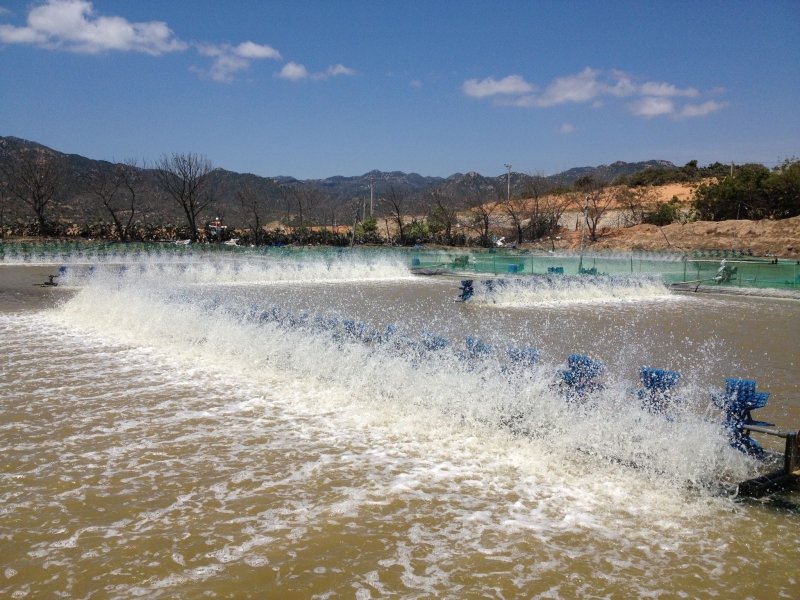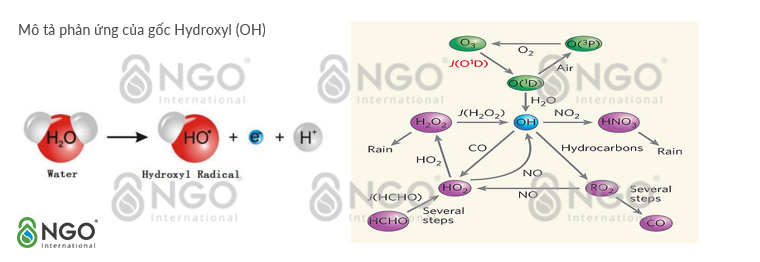NEW ELECTROCATALYTIC TECHNOLOGY FOR AQUACULTURE WASTEWATER TREATMENT

1. Composition of aquaculture wastewater:
In Vietnam, besides the forms of aquaculture in cages, the forms of aquaculture in ponds and lakes are very popular and developed in many localities throughout the country. The main aquaculture species are freshwater fish, prawns, black tiger shrimp ... With the rapid development of the aquaculture industry in recent years, a large amount of wastewater from many aquaculture units has not been thoroughly treated, leading to the risk of polluting water sources in general and lakes water in particular, significantly impacting on aquatic life and human life.
Aquaculture wastewater in general and wastewater from fish, shrimp farming in particular have high concentrations of COD, BOD, N and harmful microorganisms due to organic sources from surplus feed, bio-products used in stock-raising and waste water from livestock.
1.1 Characteristics of wastewater from fish farming:
- Fishpond water is polluted mainly by excess organic matter in water from food sources. The fact that, only about 17% of food is absorbed by fishes and the rest (about 83%) mixed in water then becomes decomposed organic matters. Stool and other wastes shall deposit in the bottom of pond, which make COD, BOD, N and other pathogenic microorganisms increase. If the waste source is discharged into the environment, it will cause eutrophication at receiving sources or algae blooms. In addition, wastewater containing residual chemicals (e.g: antibiotics for fish) must be treated.
1.2 Characteristics of wastewater from shrimp farming:
- Wastewater of shrimp farming contains large amounts of nitrogen, phosphorus and other nutrients, which cause super-nutrients, thereby increasing the initial productivity and proliferation of bacteria. The presence of carbonic compounds and organic matter will reduce dissolved oxygen and increase BOD, COD, hydrogen sulfide, ammonia and methane content in natural waters. Another problem caused by shrimp farming is sludge sedimentation in the surrounding areas, such as mangroves. Most of substances in shrimp farming water are deposited at the bottom, which is a threat to shrimps, and shrimp farming. This mud layer is very toxic, contains many harmful substances such as ammonia, sulfur compounds....
2. Treatment solution applied to wastewater in aquaculture ponds and lakes using electrocatalytic technology.
2.1. Advantages:
- Directly treat wastewater in ponds and lakes without affecting fishes and shrimps;
- Water in ponds and lakes are continuously treated by using electrolysis catalytic reaction equipment immediately. The method saves water and periodic water changing cost;
- Simple operation and periodic cleaning;
- Decontaminating harmful wastes such as ammonia (NH3) and nitrite (NO2-) to help keep aquatic life in clean and healthy water.
- Break down protein and nutrients, reducing total organic matter levels in water
- Reduce the start-up time of the tank/ pond (Nitrogen Cycle) and prevents new tank/pond syndrome
- Minimize odor from pond water
- Improve the transparency of water
- Support to increase the longevity, density and weight of shrimps and fishes in the ponds, thereby improving economic efficiency.

2.2. Operating Principles
Electrocatalytic treatment technology for aquaculture wastewater which contains a large amount of salts, organic matter, sulfur compounds, heavy metal ions, acid, alkaline ... This technology uses oxidation reaction of the hydroxyl (OH) free radical group with very strong reaction in short time. Most of the organic waste through the system is quickly broken down into carbon dioxide, water, and smaller organic and inorganic ions through oxidation.

With many economic benefits for farmer, optimized design, simple operation and cost saving, aquaculture wastewater treatment solutions by Electrochemical catalysis technology introduced and developed by NGO will contribute to the effective treatment of pollutants in aquaculture wastewater, ensuring that after-treatment water meets the requirement of QCVN 01-80: 2011 / BNNPTNT standard.
If your business is interested in solution to inlet water treatment, or has a demand for ion exchange materials, please contact NGO via phone number (024) 3566 8225 or email office@8ngo.com for direct consultation.
-
 Wastewater treatment
Wastewater treatment
-
 A standard domestic wastewater
A standard domestic wastewater
-
 B standard domestic wastewater
B standard domestic wastewater
-
 Pig Farm Wastewater
Pig Farm Wastewater
-
 Textile dyeing wastewater
Textile dyeing wastewater
-
 Paper industry wastewater solution
Paper industry wastewater solution
-
 Textile Dyeing Wastewater & Industrial Washing
Textile Dyeing Wastewater & Industrial Washing
-
 Slaughter wastewater treatment solution
Slaughter wastewater treatment solution
-
 Aquaculture wastewater
Aquaculture wastewater
-
 Starch wastewater
Starch wastewater
-
 Petroleum wastewater
Petroleum wastewater
-
 Beer wastewater
Beer wastewater
-
 Other industrial wastewaters
Other industrial wastewaters
-
 BioPM - Organic Industrial wastewater treatment solution
BioPM - Organic Industrial wastewater treatment solution
-
 MBR solutions
MBR solutions
-
 Conventional activated sludge (CAS)
Conventional activated sludge (CAS)
-
 Moving bed biofilm reactor (MBBR)
Moving bed biofilm reactor (MBBR)
-
 Anaerobic- Anoxic-Aerobic (AAO)
Anaerobic- Anoxic-Aerobic (AAO)
-
 Sequencing batch reactor (SBR)
Sequencing batch reactor (SBR)
-
 Physical & Chemical methods
Physical & Chemical methods
-
 Supply water treatment
Supply water treatment
-
 Cooling system water
Cooling system water
-
 Water treatment for food and Beverage production
Water treatment for food and Beverage production
-
 Ultra pure water supply solution for electronic industry
Ultra pure water supply solution for electronic industry
-
 Pure water supply for pharmaceutical manufacturers
Pure water supply for pharmaceutical manufacturers
-
 Water Supply treatment with ion exchange method
Water Supply treatment with ion exchange method
-
 Ordor Treatment
Ordor Treatment

